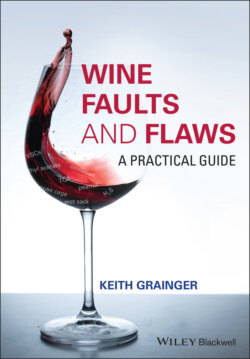Читать книгу Wine Faults and Flaws - Keith Grainger - Страница 57
2.5.4.2 Rosé Wines
ОглавлениеOf all wine types, rosé is the category that is made for visual appeal. Winemakers and marketing departments know that an attractive appearance is crucial to the drinker's perceptions of style and quality. The colour of rosé wines depends on several factors, particularly the production techniques, e.g. whether the colour is the result of skin contact in the press, a short maceration in the tank, or if the wine has been made by the saignée method. This technique involves draining juice from a vat of fermenting crushed red grapes before heavy colour extraction, perhaps after 6–24 hours or so. If the vat is bled after six hours the colour will usually be pale, whilst 24 hours will give a deeper coloured rosé, but the actual colour and intensity will depend on many factors, including climatic conditions and grape variety. There is a very wide range of possible colours and intensities for rosé wines from onion‐skin to pink or even orange. Any orange or brown tints should be regarded as a danger sign, indicating oxidation which even in its early stages will result in a loss of fruit, and bitterness on the palate.
